Japanese tradition
Go devises his own, completely unique way to enjoy a classic summer meal, and named it: Jibun wo Nagashi Somen.
People in Japan are turning to the mysterious Amabie to help us through the coronavirus pandemic.
Bonsai and sushi are two of Japan’s most well-known cultural exports with fans all over the world. But while Japan may cling to the traditional presentation of these two icons, globalization has taken these Japanese icons and turned them into something new. Not just happy with tiny trees and raw fish on top of vinegar rice, these cultural hybrids have evolved into something far beyond their origins in the Japanese archipelago. Click below to see some very creative bonsai as well as some food that really stretches the definition of “sushi.”
No matter what country you call home, there are always moments when you feel like a true citizen. For me, it’s when I’m sitting on the couch watching football (the American version) and eating chips (of the thinly sliced, wavy fried potato variety) and dip.
What about Japan? What makes Japanese citizens feel distinctly Japanese? My Navi News asked 1,000 of their members to tell them about a moment when they felt Japanese. Here are the results of their survey:
Japan’s premier naked festival, Sominsai (Somin Festival), was held this year on January 29 at Kokuseki Temple in Iwate Prefecture.
The name “naked” is somewhat misleading though, as participants are required to wear a fundoshi, a piece of white cloth which can best be descried as a traditional Japanese G-string. This scant clothing offers little protection from the blistering, below-freezing cold participants are expected to endure. Nevertheless, the toughest of men from across Japan come to test their mettle by trekking through grueling icy course from the temple to the river that’s cold enough to make you feel like you’re dying.
I know this because I took part.
That’s right, your fearless reporter put his life at risk to bring the experience of Kokuseki’s Sominsai to you, our beloved readers.
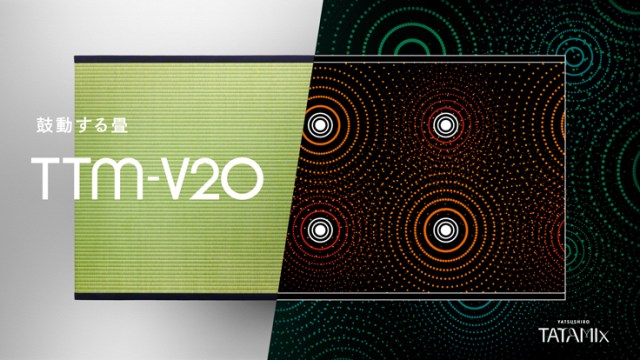
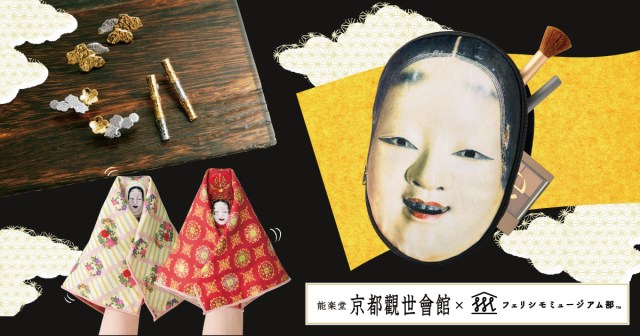
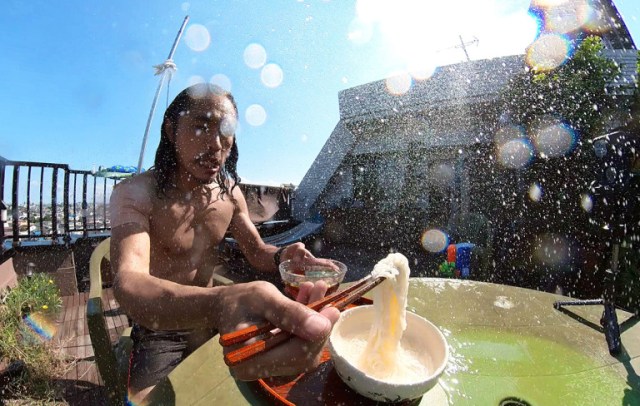
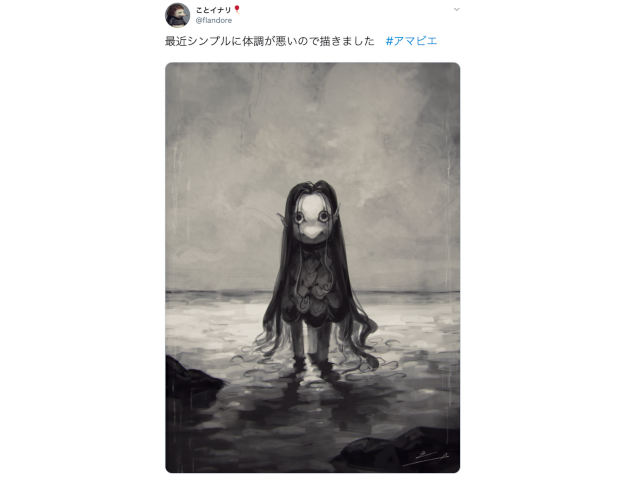
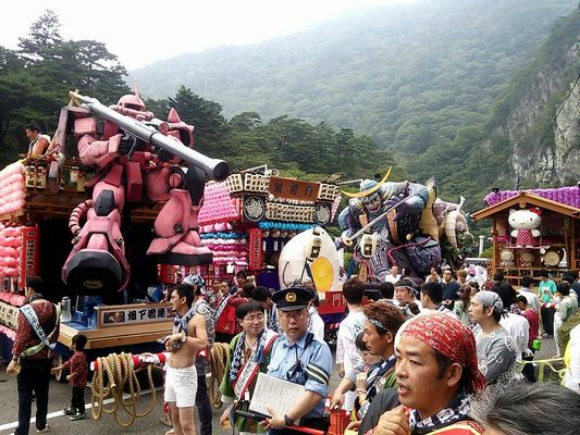
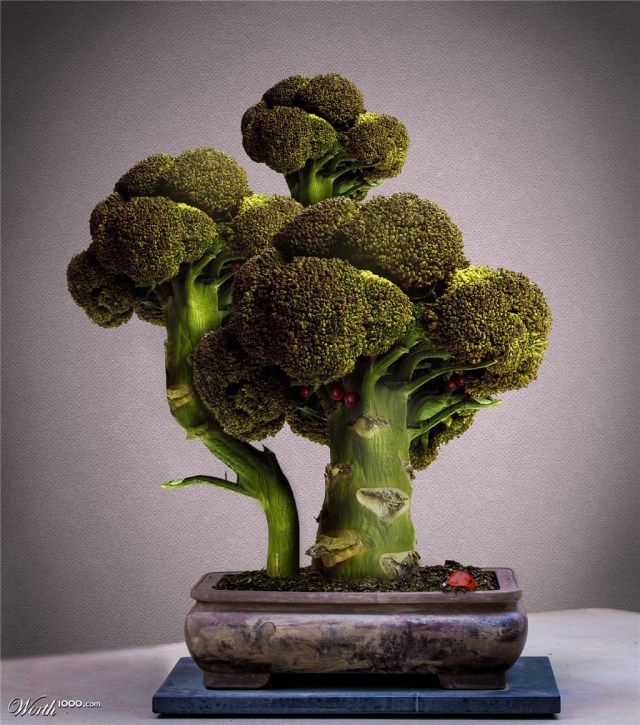
![[On Location at Somin Naked Festival] I Was So Cold I Actually Thought I Was Going To Die [On Location at Somin Naked Festival] I Was So Cold I Actually Thought I Was Going To Die](https://soranews24.com/wp-content/uploads/sites/3/2012/01/sominrepo1.jpg?w=580)
 Japan’s official Hello Kitty Airport holds ribbon-cutting ceremony, now welcoming travelers【Pics】
Japan’s official Hello Kitty Airport holds ribbon-cutting ceremony, now welcoming travelers【Pics】 Why is this cafe in Asakusa so popular with foreign tourists?
Why is this cafe in Asakusa so popular with foreign tourists? Studio Ghibli bean bag plushies are ready to receive your love and affection
Studio Ghibli bean bag plushies are ready to receive your love and affection McDonald’s Japan unveils latest anime Happy Meal collaboration: Chiikawa!
McDonald’s Japan unveils latest anime Happy Meal collaboration: Chiikawa! Trial of man accused of kicking rabbits to death on Japan’s rabbit island comes to an end
Trial of man accused of kicking rabbits to death on Japan’s rabbit island comes to an end New world’s biggest Muji just opened in Japan, and we paid it a visit【Photos】
New world’s biggest Muji just opened in Japan, and we paid it a visit【Photos】 The My Melody ♡ Kuromi Anniversary Party is in full kawaii swing at the Ikebukuro Parco store
The My Melody ♡ Kuromi Anniversary Party is in full kawaii swing at the Ikebukuro Parco store Domo-kun Diner is serving up your Domo-eats in Yokohama
Domo-kun Diner is serving up your Domo-eats in Yokohama Shibuya’s Hachiko Family public art installation will be permanently removed, not relocated
Shibuya’s Hachiko Family public art installation will be permanently removed, not relocated Studio Ghibli diorama boxes are much more beautiful than your elementary school art project【Pics】
Studio Ghibli diorama boxes are much more beautiful than your elementary school art project【Pics】 Sleep on Totoro’s belly with Studio Ghibli’s My Neighbour Totoro Nap Cushion
Sleep on Totoro’s belly with Studio Ghibli’s My Neighbour Totoro Nap Cushion Fake cherry blossom viewing failure leads us to international friendship in Ueno Park
Fake cherry blossom viewing failure leads us to international friendship in Ueno Park Five Daiso souvenirs you should buy in Japan right now
Five Daiso souvenirs you should buy in Japan right now Starbucks releases a new Frappuccino in Japan to help us “forget about everyday life”
Starbucks releases a new Frappuccino in Japan to help us “forget about everyday life” This secret spring flower-viewing spot in Japan is yet to be discovered by international tourists
This secret spring flower-viewing spot in Japan is yet to be discovered by international tourists University of Tokyo announces new department with all classes taught in English
University of Tokyo announces new department with all classes taught in English Explore Japan’s volcanic beauty at Hakone’s latest attraction
Explore Japan’s volcanic beauty at Hakone’s latest attraction Changes to Japan rail pass make it fall out of favour with travellers
Changes to Japan rail pass make it fall out of favour with travellers Studio Ghibli bean bag plushies let you bond with animals of Princess Mononoke, Castle in the Sky
Studio Ghibli bean bag plushies let you bond with animals of Princess Mononoke, Castle in the Sky Fake Japanese whisky countermeasures now include official Japanese whisky emblem
Fake Japanese whisky countermeasures now include official Japanese whisky emblem Department store rooftop in Tokyo is a secret oasis above the city
Department store rooftop in Tokyo is a secret oasis above the city Secret onsen hot spring is a hidden gem in Tokyo
Secret onsen hot spring is a hidden gem in Tokyo Japanese man who ate at same beef bowl chain for 2,000 days in a row announces he’s gotten married
Japanese man who ate at same beef bowl chain for 2,000 days in a row announces he’s gotten married McDonald’s new Happy Meals offer up cute and practical Sanrio lifestyle goods
McDonald’s new Happy Meals offer up cute and practical Sanrio lifestyle goods Foreign tourists on Shinkansen bullet train break suitcase etiquette, angering local passengers
Foreign tourists on Shinkansen bullet train break suitcase etiquette, angering local passengers Possessing Harry Potter’s Sword of Godric Gryffindor is now illegal in Japan
Possessing Harry Potter’s Sword of Godric Gryffindor is now illegal in Japan [Deleted] Article written for April Fool’s Day 2018
[Deleted] Article written for April Fool’s Day 2018 Japan’s deadliest food claims more victims, but why do people keep eating it for New Year’s?
Japan’s deadliest food claims more victims, but why do people keep eating it for New Year’s? Foreigner’s request for help in Tokyo makes us sad for the state of society
Foreigner’s request for help in Tokyo makes us sad for the state of society Japanese convenience store Family Mart announces abolishment of eat-in spaces
Japanese convenience store Family Mart announces abolishment of eat-in spaces Life-size vibrating Legend of Zelda Master Sword for sale from Nintendo【Photos】
Life-size vibrating Legend of Zelda Master Sword for sale from Nintendo【Photos】 Studio Ghibli releases free-download board game — Here’s how to play it without reading Japanese
Studio Ghibli releases free-download board game — Here’s how to play it without reading Japanese Princesses, fruits, and blacksmiths: Study reveals the 30 most unusual family names in Japan
Princesses, fruits, and blacksmiths: Study reveals the 30 most unusual family names in Japan New world’s biggest Muji just opened in Japan, and we paid it a visit【Photos】
New world’s biggest Muji just opened in Japan, and we paid it a visit【Photos】 The My Melody ♡ Kuromi Anniversary Party is in full kawaii swing at the Ikebukuro Parco store
The My Melody ♡ Kuromi Anniversary Party is in full kawaii swing at the Ikebukuro Parco store Domo-kun Diner is serving up your Domo-eats in Yokohama
Domo-kun Diner is serving up your Domo-eats in Yokohama Shibuya’s Hachiko Family public art installation will be permanently removed, not relocated
Shibuya’s Hachiko Family public art installation will be permanently removed, not relocated Studio Ghibli diorama boxes are much more beautiful than your elementary school art project【Pics】
Studio Ghibli diorama boxes are much more beautiful than your elementary school art project【Pics】 Japanese “Ichiban Street” recreated at new shopping mall in China
Japanese “Ichiban Street” recreated at new shopping mall in China What exactly is the treat known as a “kougnané” that’s sold outside Tokyo’s Yurakucho Station?
What exactly is the treat known as a “kougnané” that’s sold outside Tokyo’s Yurakucho Station? We try Yoshinoya’s take on Setsubun ehomaki lucky sushi rolls with mixed results
We try Yoshinoya’s take on Setsubun ehomaki lucky sushi rolls with mixed results Haku is…Chihiro’s dead brother? Studio Ghibli fans blown away by Spirited Away theory
Haku is…Chihiro’s dead brother? Studio Ghibli fans blown away by Spirited Away theory Noodle chain Marugame rolls out strawberry milk udon donuts for new spring sweets lineup
Noodle chain Marugame rolls out strawberry milk udon donuts for new spring sweets lineup Even Japanese people are frightened by the concealed anger in Kyoto compliment foreigner received
Even Japanese people are frightened by the concealed anger in Kyoto compliment foreigner received Sakura Ride Plan: A new way to see the best cherry blossom sites in Tokyo
Sakura Ride Plan: A new way to see the best cherry blossom sites in Tokyo Japan Super Budget Dining – What’s the best way to spend 1,000 yen at Doutor?
Japan Super Budget Dining – What’s the best way to spend 1,000 yen at Doutor? The beautiful booth models of the Tokyo Motorcycle Show【Photos】
The beautiful booth models of the Tokyo Motorcycle Show【Photos】